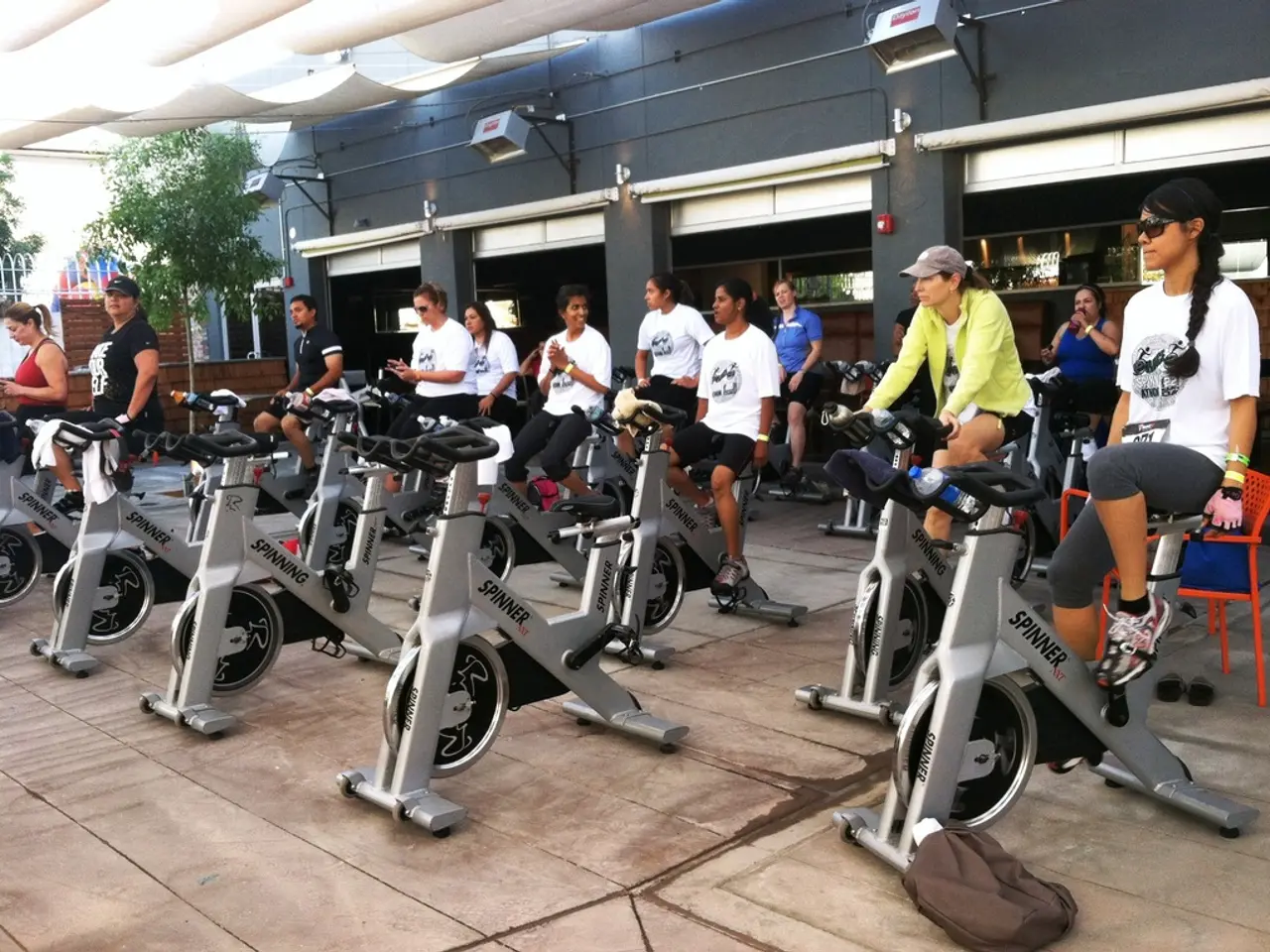Tired of having a potbelly? Here's what professionals suggest for fat loss in your abdominal region
In the quest for a healthier body, understanding the different types of fat the human body stores is crucial. The primary types of fat are subcutaneous fat, visceral fat, and intramuscular fat.
Subcutaneous fat, the fat you can feel and see just beneath the skin, is generally less harmful to health compared to its counterparts. This type of fat helps with thermal regulation, protects internal organs, synthesizes major hormones, and acts as a backup energy reserve.
However, the more dangerous fat is visceral fat, which is located deeper inside the abdomen, surrounding vital organs. This type of fat is linked to serious health risks such as type 2 diabetes, increased blood pressure, cholesterol, and certain cancers because it affects insulin resistance and hormone release.
Intramuscular fat, found within muscles, is another form of fat storage that can impact metabolic health. While less commonly discussed, it can affect muscle function and insulin sensitivity.
Managing overall fat, especially reducing visceral fat through diet and exercise, is essential for preventing health issues. Here are some practical tips to help you on your journey:
- Habit-building: Identifying bad habits and making small changes to wean them out is important. The key to success in habit-building is consistency and gradual, sustainable changes.
- Diet: Finding a calorie amount that works for you and your lifestyle is the key to weight loss success. There are no magical foods that will slim your waist or supplements that will trim the fat. Making small, sustainable changes like drinking more water, swapping sugary snacks for healthier options, or adding one extra portion of vegetables to your meals each day can contribute to weight loss.
- Exercise: Regular exercise can significantly reduce the risk of serious disease. Aim for at least 150 minutes of moderate-intensity exercise or 75 minutes of vigorous-intensity exercise per week. Don't neglect strength training as it increases metabolic rate and helps burn more calories even at rest. High-Intensity Interval Training (HIIT) is extremely effective for burning calories and fat. Joe Wicks offers 15-minute HIIT sessions on his YouTube channel, targeted towards weight loss.
- Balanced Diet and Lifestyle: A balanced diet and overall healthy lifestyle are crucial for losing belly fat and maintaining a healthy weight. Luke Hughes provides a one-week exercise plan for building foundations, learning proper form, and introducing the body to physical activity.
- Reducing Overall Body Fat: To lose belly fat, one needs to reduce overall body fat through a combination of cardio and strength training. Steven Dick advises this approach to losing belly fat, emphasizing the importance of a holistic approach to weight loss.
Remember, you cannot directly target belly fat through exercises. However, by focusing on reducing overall body fat, you will naturally reduce belly fat as well. The population is around 20% less active than in the 1960s and could be 35% less active by 2030, according to GOV.UK. So, let's take a step towards a healthier future today!
[1] Mayo Clinic. (2021). Visceral fat: What is visceral fat and why is it dangerous? https://www.mayoclinic.org/healthy-lifestyle/weight-loss/in-depth/visceral-fat/art-20046263
[2] Healthline. (2020). The role of intramuscular fat in health and disease. https://www.healthline.com/nutrition/intramuscular-fat
- In addition to managing diet and exercise, engaging in crafts such as crochet, knitting, or sewing can contribute to personal growth and provide a creative outlet, promoting overall health and wellness.
- For those interested in science, understanding the differences between subcutaneous, visceral, and intramuscular fat can provide insight into health and weight management, sparking an interest in education and self-development.
- Adopting a healthy diet that includes plenty of fruits, vegetables, lean proteins, and whole grains, combined with regular fitness and exercise, can aid in weight-management and contribute to a lifestyle focused on health and wellness.
- Embracing a lifestyle that values health-and-wellness, fitness-and-exercise, and healthy-diets, may lead to a reduction in visceral fat and an improvement in metabolic health.
- In the realm of nutritional science, incorporating a variety of healthy fats, such as omega-3 fatty acids, into your diet can aid in the reduction of harmful fats and support heart health.
- Incorporating handmade crafts like crochet or knitting into a mindful practice can help reduce stress, improve mental health, and contribute to overall well-being, which can positively impact weight management and overall health.
- As part of a holistic approach to weight-management, prioritizing self-care through activities like crafts, meditation, or yoga can support personal growth, reduce stress, and facilitate healthy lifestyle changes, ultimately contributing to a healthier body and mind.




